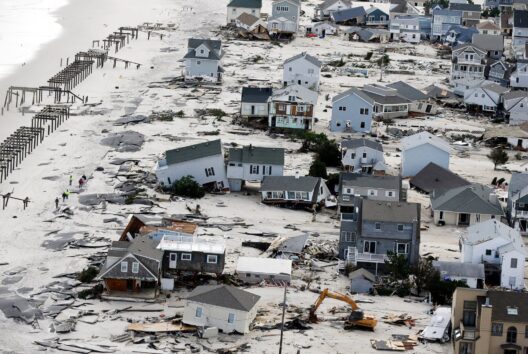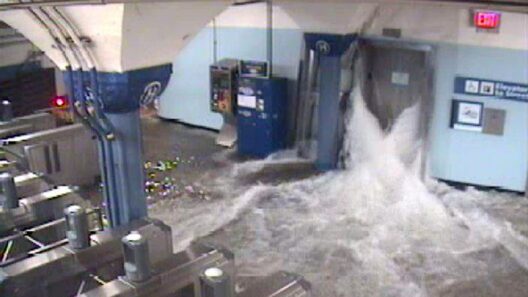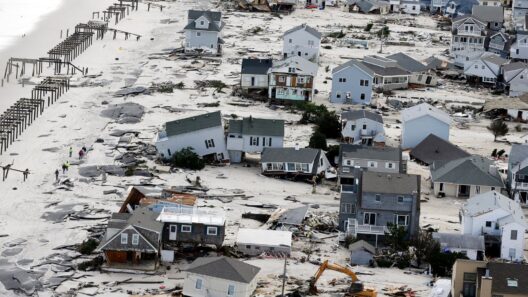In a world increasingly aware of its fragility, the issue of climate change looms large, much like an ominous cloud over a home that refuses to acknowledge the storm brewing on the horizon. An intriguing facet of this narrative is the juxtaposition of satirical entertainment against pressing global issues—specifically, the perspective of creators from the animated television show “South Park.” Known for its audacious humor and social commentary, the show provides a fertile ground for examining whether its creators grapple with the realities of global warming and climate change.
The show’s creators, Trey Parker and Matt Stone, are infamous for their irreverent takes on contemporary society, often poking fun at various cultural and political phenomena. Their artistic lens, while primarily aimed at humor, occasionally focuses on serious subjects, including environmental concerns. This prompts a multifaceted inquiry: Do these creators fundamentally believe in global warming, or are they merely using the topic as fodder for satire?
In exploring the creators’ views, it is crucial to understand their artistic ethos. “South Park” has thrived on the principle of pushing boundaries. The creators wield their influence much like a sculptor chipping away at a block of marble, revealing hidden truths through the medium of humor. Instances where climate change is addressed in the series often highlight societal apathy and the absurdity of human behavior toward the environment. They compel the audience to reflect while simultaneously yielding a hearty laugh—a juxtaposition that is quintessentially Parker and Stone.
Episodes such as “ManBearPig” serve as a startling illustration of their approach to climate change. In this episode, Al Gore is depicted as a character who fervently warns about a fictional hybrid creature that embodies the terror of climate change. The caricatured representation of Gore showcases how environmental advocates can be portrayed as overly zealous, which might lead viewers to question the sincerity of their warnings. Yet, therein lies the genius: by mirroring society’s skepticism and downplaying of climate change, they further the conversation rather than diminish the conversation’s gravity.
While Parker and Stone’s satire can be seen as a critique of environmental alarmism, it also raises vital questions. Are they skeptics who harbor doubts about the scientific consensus surrounding climate change, or do they recognize its urgency yet masterfully couch their concern in humor? Moments of genuine dialogue punctuate their comedic narrative, illustrating awareness of ecological devastation. Yet, this duality leads to friction, creating an intricate dynamic between belief and artistic expression.
The creators’ perspective on the subject becomes clearer when one examines their comments outside of their animated universe. In interviews, both Parker and Stone have revealed a level of concern about environmental issues. They have initiated projects that emphasize sustainability, revealing an affinity for the planet that contrasts with their on-screen personas. This dissonance suggests that they might indeed believe in global warming, albeit articulated through an outlandish comedic lens.
Such entertainment choices resonate with viewers only when they stand on a foundation of relatable truths. The creators imbue their work with a dichotomy reflecting contemporary societal attitudes toward climate change—ranging from denial and apathy to urgent advocacy. They embody the struggle individuals face when reconciling personal beliefs with collective responsibility, casting this tension into the broader comedic narrative.
Furthermore, the show’s depiction of environmental crises often mirrors real-life headlines and trends, underscoring a critical observation: comedy can mirror reality but also nip at its heels. By exposing absurdities in human behavior, such as rampant consumerism and a blatant disregard for environmental policy, Parker and Stone serve as modern-day jesters, revealing uncomfortable truths masked by laughter. This leads audiences to question their own complicity in the ongoing environmental plight.
Additionally, the unique appeal of “South Park” lies in its ability to evoke introspection through provocation. It compels viewers to consider the meaning of climate action amidst an ever-changing societal landscape. The creators deftly wield humor as a tool, inviting us to confront our own understanding of global warming without requiring an ego-bruising lecture. It is an invitation, rather than a condemnation, woven into the show’s DNA.
The dissonance between their comedic styles and the looming threat of climate change illustrates the pointed irony inherent in their work. As they elicit laughter at the absurdity of human behavior, they simultaneously draw attention to the existential crises bound to the environmental calamities we face. So, while Parker and Stone may not wave the climate change banner in the traditional sense, they certainly invoke a necessary dialogue through their craft. This duality offers a compelling conundrum: if one laughs at the absurdity of inaction, does it not lead to greater awareness and, hopefully, action?
In conclusion, the creators of “South Park” navigated the vast expanse of belief and satire concerning climate change with the same audacity that characterizes their show. While they may not fit neatly into the category of activists willing to champion the environmental cause overtly, they engage with the topic in a manner that is both illuminating and reflective of societal attitudes. Through their humor, they confront the uncomfortable truths of environmental inaction, illuminating a path toward awareness and possibly inspiring change amidst a culture too often paralyzed by its own contradictions.








